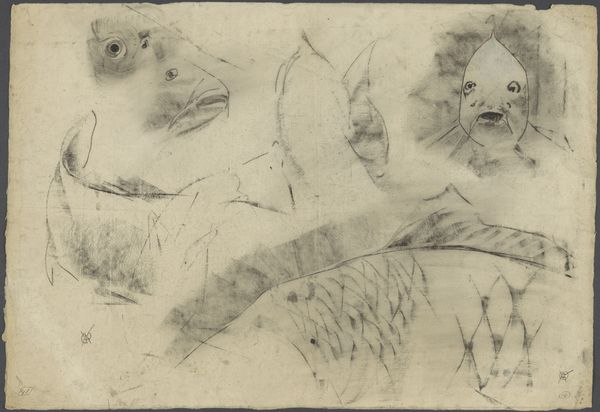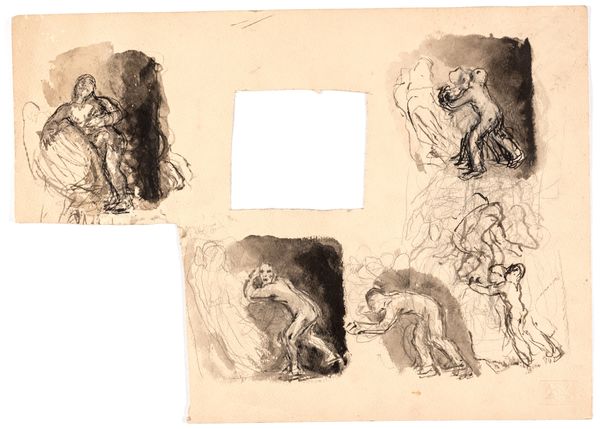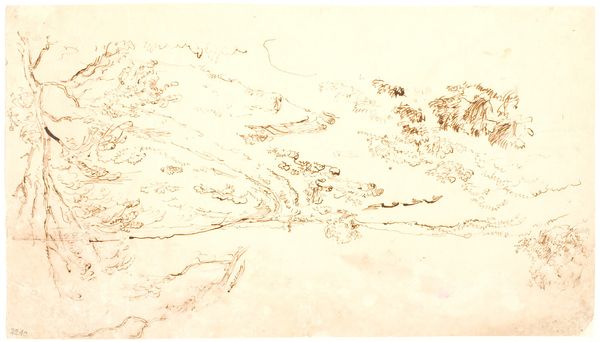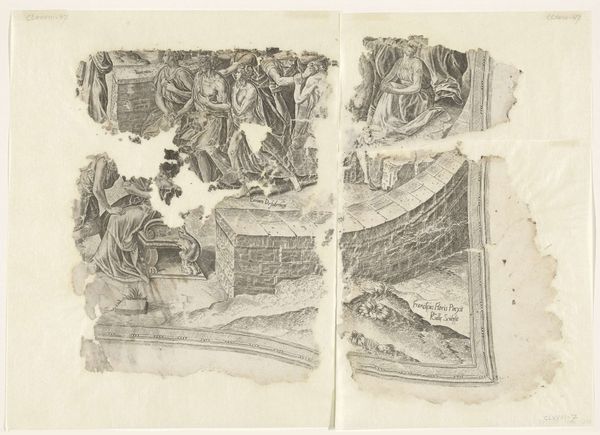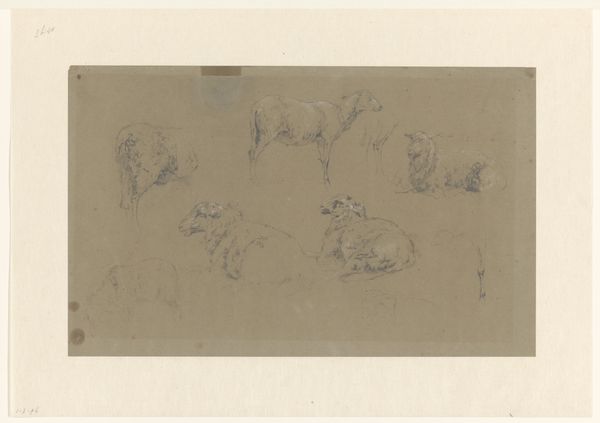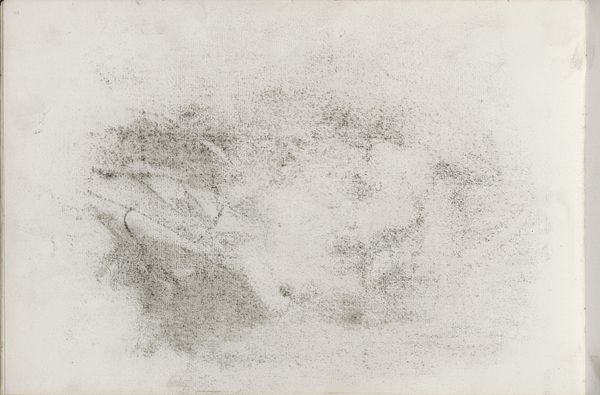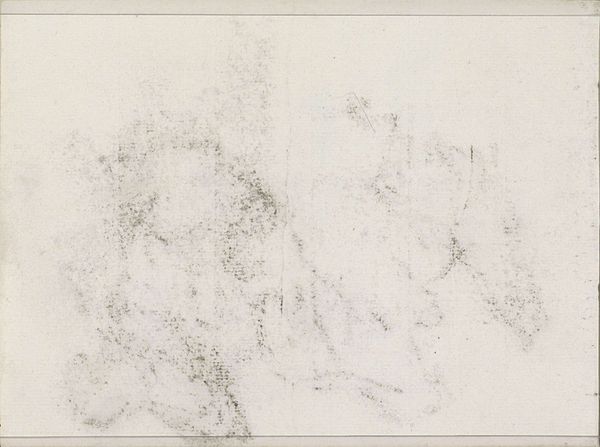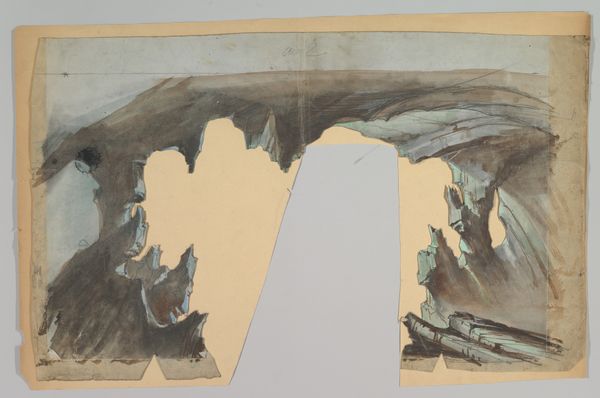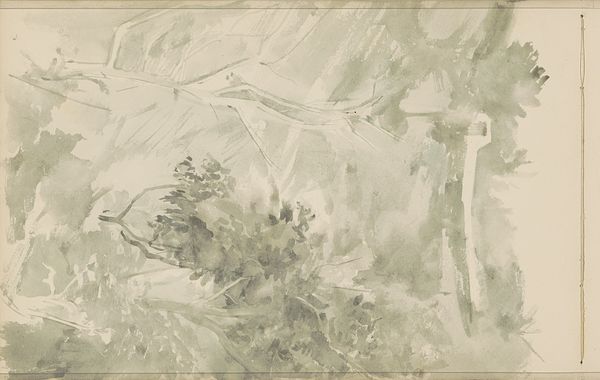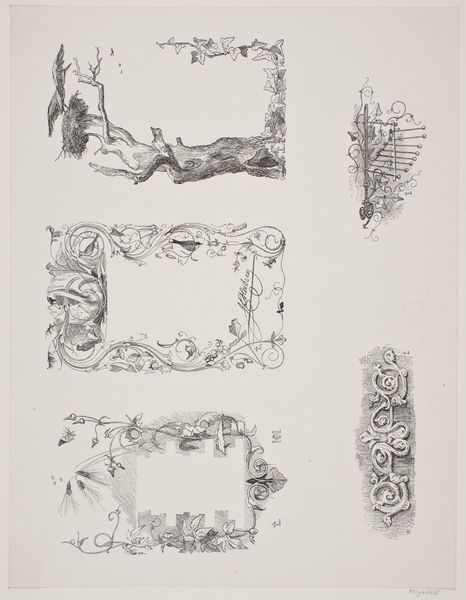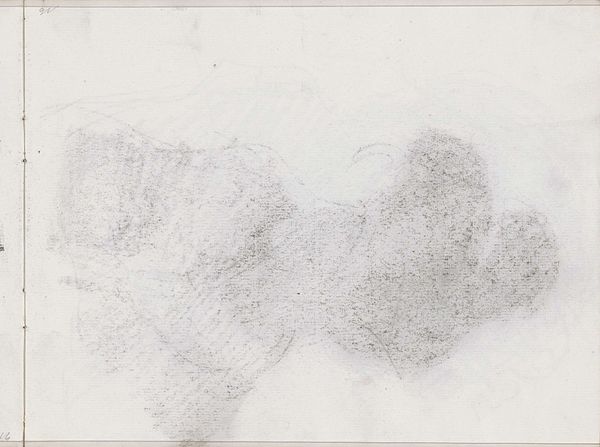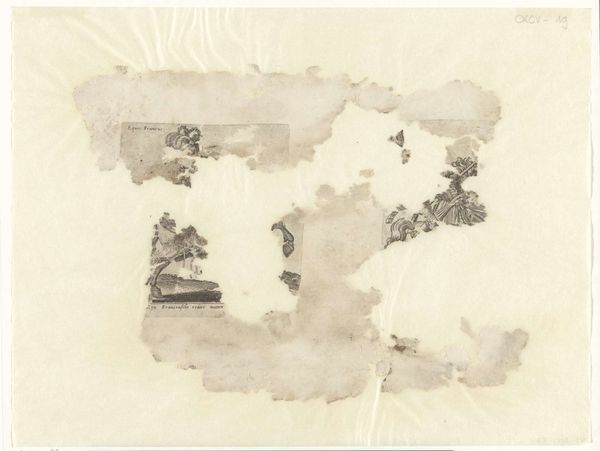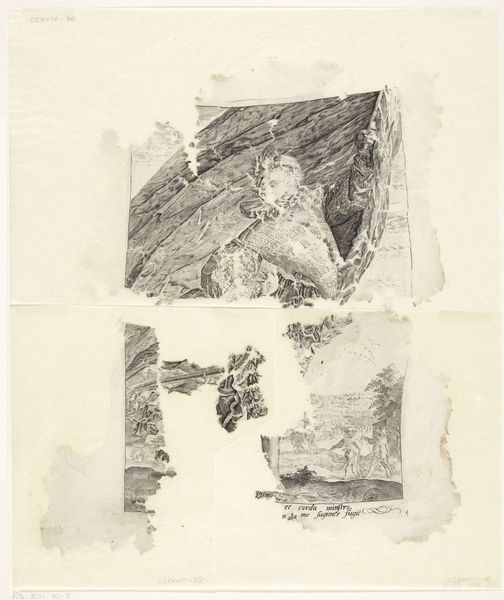
Dimensions: 235 mm (height) x 363 mm (width) (bladmaal)
Editor: This is "Illustrationsudkast" by Lorenz Frølich, likely made sometime between 1835 and 1908, using watercolor and ink. It’s a series of vignettes, almost like thumbnails for larger works. They evoke a certain sense of 19th-century Romanticism. How do you interpret this collection of small scenes? Curator: Well, what I see immediately are potential windows into the cultural mindset of the time. Frølich presents us with glimpses of the natural world rendered through a Romantic lens, of course. But let’s think about where these "illustrations" might have been intended to go. Were they intended for children's books? Were they illustrating folk tales, history books, or other popular narratives? The social context would tell us quite a lot. Editor: That’s fascinating! So, you're saying the medium itself—illustrations—speaks to a particular purpose, a need to convey stories to a broader audience. Curator: Exactly! Who was this "broader audience" then? And what values were these images intended to instill, reinforce, or perhaps even challenge? How does it reflect or shape ideas about nationalism, perhaps, or gender roles or class structure at that time? And consider Frølich’s choices of imagery - are these popular legends being illustrated? Editor: I hadn't considered it in terms of social purpose so directly. I was so focused on the aesthetic and stylistic choices that I missed the socio-political aspect. Curator: Art rarely exists in a vacuum. Even landscapes can communicate ideological messages. Consider the "naturalness" of it all; who had access to nature and on whose lands was it painted or dreamt of? Looking into Frølich’s artistic background and influences and who the intended patron of this was will open doors. Editor: So, by considering the social and historical context, we can unpack the underlying values and messages embedded within even seemingly simple illustrations? Thank you, that's quite enlightening. Curator: Precisely! The political nature of imagery is always important. Looking at art with this lens in mind teaches us a lot about the history.
Comments
No comments
Be the first to comment and join the conversation on the ultimate creative platform.
